Nubra Valley, Ladakh Medical work
Day 4, 18 July 2018 Meeting The Dalai Lama
This had been a wish of the highest priority in Serene and my lives.
We woke up at 4am, and set out at 4:30am.
Wangyal’s Guesthouse was still in total darkness and the air was crisp and cold when we moved out.
Wangyal’s Guesthouse was still in total darkness and the air was crisp and cold when we moved out.
The one hour drive across the valley to the other side of the U back to Diskit took one hour this morning.
Here is the VIDEO for Day4
 |
| Our drivers very excited to be meeting His Holiness The Dalai Lama and were in their traditional wear. |
We were amongst the first few to arrive just before 6am and we waited at the main gate of Diskit Gompa, guarded by armed soldiers.
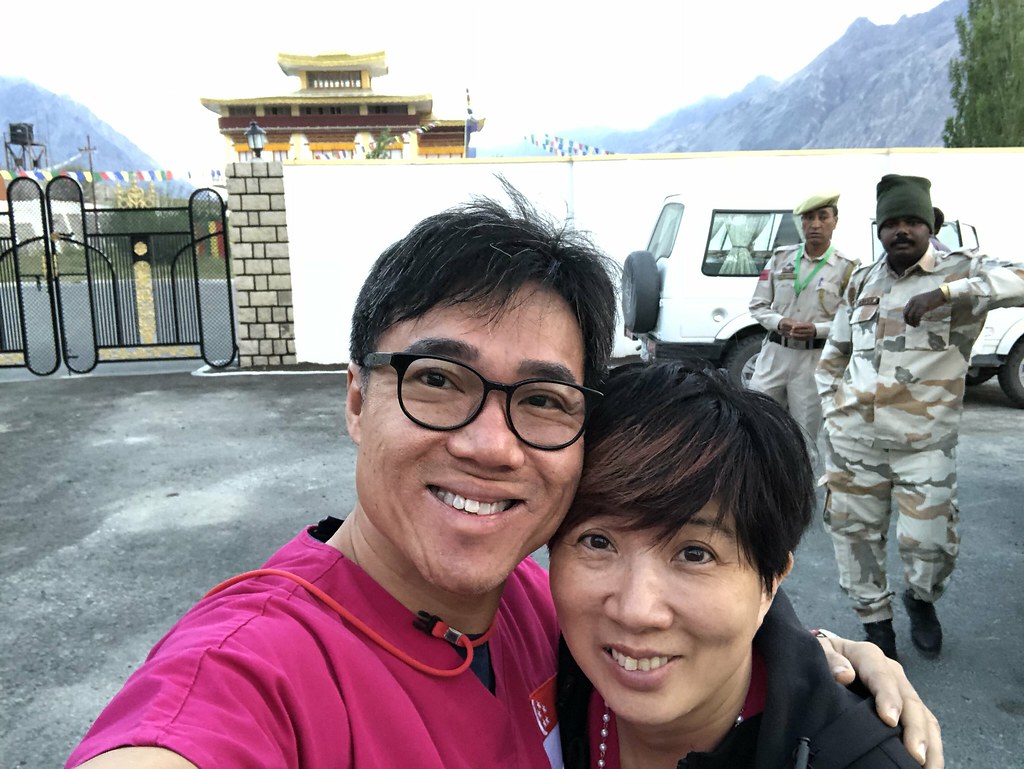 |
| Luckily the Indian guards behind never whacked us for breaching security with our selfie. |
Along the road leading up to the main gate was a row of houses where several Ladakhi ladies were cheerfully kneading chapati and deep frying them. We only knew much later that they were preparing these for The Dalai Lama’s breakfast.
Lay Hong and Jeanette were so sporting and they joined in the fun in kneading the dough, to a certain degree of success.
Meanwhile
several of our drivers and our guides were donned in their traditional
clothes and had prayer wheels in hands waiting to meet His Holiness
together with us.
6:14am.
As the morning drew on and the sun started climbing the rays warmed up
the air and we felt better. More villagers were already walking towards
the main gate and had queued up in an orderly fashion along the side,
kata in hands, waiting patiently. There was a very old man who could
hardly walk and his family brought him on a chair and let him sit on the
chair as he waited for The Dalai Lama.
“When you are so old, you need no worldly possessions,” remarked Haw Chou, standing beside me waiting. “He can have the most delicious of food but he has no teeth nor the appetite to stomach them. The most beautiful of clothings won’t make him happy. All he wanted before he goes along his way is simply to meet The Dalai Lama.”
So profound. And again such truth.
We
the 21 medical delegates from Singapore were the lucky ones for we had
our papers and photos all properly done for security clearance and we
would be allowed to enter the premises of the Gompa to actually be in
the presence of His Holiness, while the common men and women could only
stand outside waiting just to catch a glimpse of the great spiritual
leader.
There
was a metal detector frame set up outside the gates and we were all required to
be body searched before we enter, with our own katas in hand. Laura and
I each had a book or two that we hoped The Dalai Lama could autograph
for us. But none of us had any idea how the whole process was going to
be like.
 |
| Panorama by Serene |
7:12am. A sudden commotion outside and
the guards and soldiers jumped into action and the gates sprang open. A
convoy came through and right in front was a black SUV which, seated
right in front in the passenger seat, was The Dalai Lama himself. He was
beaming and waving to everyone on the side!
May took an excellent video showing his entry and shared with all of us.

His
Holiness was here for a very short breakfast before moving off to his
helicopter for the flight. We waited while he and his entourage had
their meal.
Suddenly one of the in charge, a man in suit, called out:
“Singapore delegates quickly! Get ready come come! Line up on the stairs and pass me your cameras. I will take a group photo for you all.”
We
scrambled and the whole scene kept replaying itself in my mind even up
till this moment as I was penning it. It happened too quickly.
We
were lined up on each aide of the steps and then His Holiness The Dalai
Lama appeared at the front door of the building with his followers
holding a huge golden umbrella. He was smiling away.
He had aged and he had become slower, but he still radiated an aura of gentle calmness. Everyone grabbed his and her mobile and started snapping and selfie-ing.
He had aged and he had become slower, but he still radiated an aura of gentle calmness. Everyone grabbed his and her mobile and started snapping and selfie-ing.
Bikky bent down and touched The Dalai Lama’s foot. He later explained to me: “In our Hindi culture touching the foot is showing respect so its natural for me to be on my knees to touch his foot and show my respect.”
The Dalai Lama smiled and slowly made his way down. I looked at him and my mind went blank.
Then
when he reached me, he looked straight at me in the eyes, and he took
one step towards me, reached out his right hand and gently shook mine.
“Thank you,” The Dalai Lama, still looking me in the eyes, smiled and said in his gentle deep voice.
What was a mere mortal like me to do? I could only utter a feeble thank you in return.
After
that he looked straight at Chin Lee’s face and smiled, and proceeded to
shake Lee Haw Chou and Chang Haw Chong’s hands and thanking them.
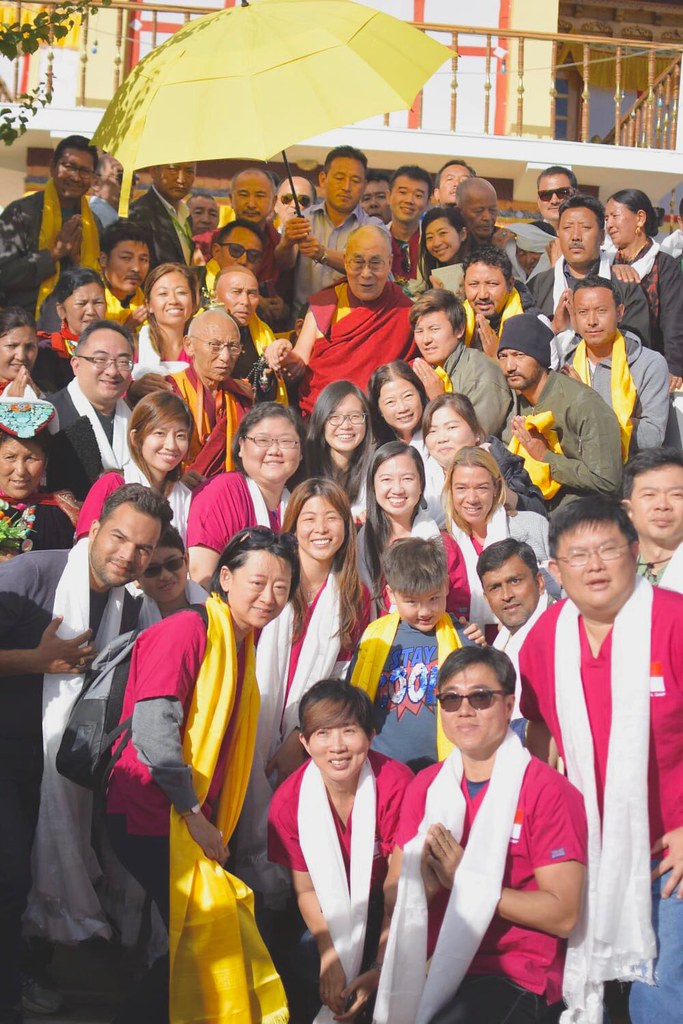 |
| Group photo: Courtesy of Chang Haw Chong |
I
didn’t even know how to react, not to mention grab my book to ask for
his autograph although it was already nestled in my pocket with the pen
all prepared.
In a blink of an eye, he was ushered into the SUV and he waved bye bye as he was driven away to his helicopter.
I ruminated multiple times, going through the scene in my mind, again and again, attempting introspection to uncover the deepest of my emotional response to this short but significant meeting with The Dalai Lama himself.
His genuine and sincere eye contact with me, his
shaking my hand and that gentle voice thanking me... finally I came to a
conclusion.
What was my conclusion?
It was astoundingly simple. Despite The fourteenth Dalai Lama Tenzin Gyatzo being a reincarnation of Chenrezig back to the mortal world to enlighten every sentient being, he was very very much like me, a down-to-earth human being still. And here he was, a simple, breathing, heart-beating human being, doing what he thought was the best for his people, leading them spiritually, educating them and helping them to gain self-respect and self-confidence, and urging them onto the path of enlightenment. At that very moment, it was a human being thanking another fellow human being, and that fellow human being returning the gratitude. Period.
I didn’t need his autograph on my book. He had already signed his autograph in my heart and my brain. I simply needed to dig deeper into myself with constant introspection, to find my strength and do what little I can for all with whom I have the karma of interacting with for the rest of my this current life. It was just so simple.That smile from His Holiness and his words and handshake had woken something inside me. Personally I did not believe it would ever be anything of greatness, but in a small way, I could perhaps replicate what he did- to bring some comfort and reassurance to patients.That was the singular, most important message that I received from The Dalai Lama. Perhaps that was why he was thanking us for being there to bring some comfort to the people.
I was fully recharged after the meeting. And I was ready to give my all on this second day of our medical work at the monastery.
Medial session at Samstanling monastery - time to get to work again!
“Doctor ah, you still have a lot of buscopan, Stemetil tablets and lactulose syrup hor!” very gentle reminders from Vicky and Shu Xian. I promised them I will try my best to use that afternoon.
We started our session at 10am on this day.
I was surprised that villagers were already waiting at the registration area.
They knew we would be coming back so they must have walked up the mountain from their home.
Chang Haw Chong said later: "It would be good if the ladies can come with baggy pants because it's so difficult for me to examine their knees with all the tight clothing." A very good point.
Lee Hanjing was reflecting: “Actually many of these patients have skin damage by the UV rays. If only they had a solution that can be simple and easily available for constant use, for example like aloe vera.”
“What we can do next time,” continued Hanjing. “is that we can actually take one hour off to hold a talk for them to educate them on sun protection and that will be really helpful.”
The
registration ladies were doing a great job. In fact they wrote down the
complaints in such orderly manner, getting as much history as possible
from each patient that by the time the registration sheets and patients
reached me, the departments that each patient would need to visit was
clearly annotated:
For example, 1. General: eyes blurry and painful; 2. UBT-Gastric pain for one year already; 3. Breast/gynae screening.
With
such well organized approached instituted by Laura, Vanessa and
Jeanette, Chin Lee, Lay Hong, Terence and the two young little gentlemen
were able to escort quickly the patients to the various departments.
Laura and Vanessa's written histories were so precise and right to the point that it made it very easy for us to see the patients. I was complimenting them for jobs well done.
Laura and Vanessa's written histories were so precise and right to the point that it made it very easy for us to see the patients. I was complimenting them for jobs well done.
Laura said: "After a while we roughly knew what to ask them: red, teary eyes... knee pain, and such and such... and we were able to write down systematically their complaints." Really great job, these triage girls.
My interpreters were doing great jobs too, each one of them.
“Tacha? (Itchy)” I was able to ask some of the patients using simple words I learned over the couple of days.
Again, the usual run of the mill cataracts, allergic rhinitis, myopia, presbyopia et al.
“No more Augmentin!” announcement from the dispensary. “No more chloramphenicol Eye drops! No more voltaren! No more ultracets! Ranitidine all finished! Flagyl (metronidazole) all empty already!”
One
by one the bad news kept coming. And I started having to write private
prescription even until I saw that the orthopods were starting to write
prescription for Panadol!! Wah Lau eh!!!
My queue surged and Serene kept ding-dong-ing me.
“Ok ok I know I know!” I was trying my best. But one just couldn’t simply push off a 40 year old farmer who suffered allergic conjunctivitis for years because she wasn’t used to wearing UV protection sunglasses and her lower conjunctiva were all inflamed and irritated by the harsh and dry conditions without teaching her how to protect herself, nor reminding an 11 year old student who was starting to suffer from myopia presenting with difficulty reading the blackboard yet kept watching TV for long hours? Right?
Medical
treatment was all about primary prevention, more importantly so at the
ground level. And here in Nubra valley we were literally at ground zero. And a primary care Physician’s main job is to reassure the patients, even if he couldn't offer any concrete treatment.
“Kongto macho (don’t worry)!” this was one of my favourite sentences to every single one of the Ladakhi patients that I saw. One word, one smile, one look, and one touch. That was all it took, I believed.
“Azithromycin still got a lot hor doctor!” Came the report from the dispensary. “Ok noted!” I replied.
As
the session went on deeper into the afternoon, the orthopods and Roy’s
neurosurgical department had already declared close shop because they
had run out of medicine to use.
As I was struggling to listen to my patient, next to me Serene was still screaming high BP numbers in my ears: “58 year old man BP 170/104!”
“Repeat on the other arm after two minutes rest. If still high then put in the queue and let me see!” I called back. I must see this patient, no matter what.
Hippocrates ever said that a physician must never refuse treatment to another fellow human being. And I wasn't ready to refuse any patients the right to medical assessment, unless my boss Felicia calls for exercise cut.
Finally
I was so desperate that I dispatched Serene to find out how many
bottles of Moxifloxacin eye drop, Tonramycin eye ointment and BNC cream
the dispensary had left.
Felicia Tan herself managed to pick up a thyroid cancer case and a breast cancer case via ultrasound.
“They came specifically for these problem and they already were aware. So I am very sure these two cases will go to the local hospital for checkups. Anyway I have gotten the local people to make sure they call these two ladies up to ensure they go to the hospital.”
I was impressed by how detail and exacting she was with her follow up work.
 |
| Our very dedicated interpreters:Lamo (upper left in pink), Mutok (right centre), Tundup (left lower in khaki green). |
Some of the doctors had 收工 already and had gone back to the guesthouse to shower. The registration desk and the dispensary still had to stay on for I was still rushing through my last lot of patients. I was so thankful to Vanessa, Laura, Jeanette, Lay Hong, Vicky, Shu Xian, Jasmine and May who literally stayed on to support me. And even gotten some pizza for me after I finished seeing my patients! They rocked!
In total, the whole medical team saw about 260 patients, a little lesser than the previous day.
Felicia declared that we will not open shop the next day as the crowd was dwindling already.
4pm.
Visiting The Statue of Maitreya Buddha and viewing Diskit Gompa in the later afternoon...
After closing shop at Samstanling Gompa and making our way back to Wangyal guesthouse, four of us went on a guided tour of the Maitreya Buddha Statue and Diskit Monastery by Dorje and Bikky and we learned so much about the religious practices of the Ladakhis, and the characteristics of the Karakoram ranges and the Ladakhi ranges on the opposite side of the old glacier.
Visiting The Statue of Maitreya Buddha and viewing Diskit Gompa in the later afternoon...
After closing shop at Samstanling Gompa and making our way back to Wangyal guesthouse, four of us went on a guided tour of the Maitreya Buddha Statue and Diskit Monastery by Dorje and Bikky and we learned so much about the religious practices of the Ladakhis, and the characteristics of the Karakoram ranges and the Ladakhi ranges on the opposite side of the old glacier.
This
Diskit Gompa was the monastery whose front gate we were at this morning
to meet The Dalai Lama. The actual monastery was further up in the
slope of the mountain. Terence pointed to Diskit Gompa and told me this was where my rosary beads came from. And
that really made these beads so so special and so meaningful. They will
be with me for the rest of my life.
 |
| Looking at Diskit Gompa from the Maitreya Buddha statue |
Dorje, our
Ladakhi guide gave us a very detail run through of the Four Precepts and
the Eight Fold Paths and how these were symbolically included in the
building of each Stupa with enlightenment right at the top.
The
three Stupas that we saw just below the huge Maitreya Buddha statue -
the yellow one symbolized the wisdom of Manjusri Buddha (known as 文殊菩萨
in Chinese), the white symbolized the compassion of Avalokiteshvara
(Chenrezig, or better know as Guan Yin 观音), and the last one which was
blue symbolized the Power of Mahakala Buddha.
 |
| The three stupas: Yellow - Manjusri Bodhisattva, White - Avalokisteshvara, Blue - Mahakala. |
The statue of
Maitreya Buddha (also known as Chamba Buddha in Ladhaki, in Chinese
弥勒佛), the Future Buddha, faced right towards Pakistan. It was intended
such as the Ladakhis wish for peace with their neighbourly brothers.
The Karakoram ranges
“Which direction are the Himalayan ranges?” I asked of Dorje and Bikky.
They
pointed to the ranges on the right of the Maitreya Buddha and indicated
that these are the Karakoram ranges, behind them were the baby
Karakoram ranges K2 was somewhere further, out of sight.
On the left of the statue of Maitreya Buddha were the Ladakhi ranges.
The
Himalayan ranges? They were far far further down south of where we were
standing, and the Himalayan spanned 3700km from Burma, across Nepal,
Bhutan, Tibet, and China.
“These ranges, the Karakoram and the Ladakhi ranges are the youngest ranges in the world formed by techtonic plate movements millions of years ago. And because they are so young they don’t have a rich supply of minerals in them, minerals that need eons of compression to form.”
Pointing to the 2 o’clock position from the Maitreya Buddha, Dorje continued:
“That is where Xiachen, the border with China is.”
Bikky added: “There is where the most expensive army station is. It costs US$4 million a day just to maintain that army at the border with China. The problem with Nubra Valley and all the northern villages is, the roads are only passable 6 months in a year. During the remaining wintry six months the roads will be closed off by thick snow and frozen ice, and the villages are isolated from the rest of India. That was exactly what happened in 1962 when in winter, there were only 120 Punjabi soldiers with 800 bullets in the Xiachen camp and they were cut off from supplies and China seized this opportunity to attack with 8000 PLA soldiers and the Punjabi soldiers were over run. Every since claiming back that land, the PRO military has been working hard every winter to clear the roads leading up to every northern village to ensure that at least they are passable to vehicles. There will be no tourists but the roads are still usable.”
The sun was starting to
gradually set beneath the peaks and it was turning darkish. It was time
to go back for dinner. I was so glad that I came up to view the Diskit
Gompa and the statue of Maitreya Buddha together with Terence, Hanjing
and Haw Chong. It was enlightening to say the least. And it was a
calming end to a meaningful day.
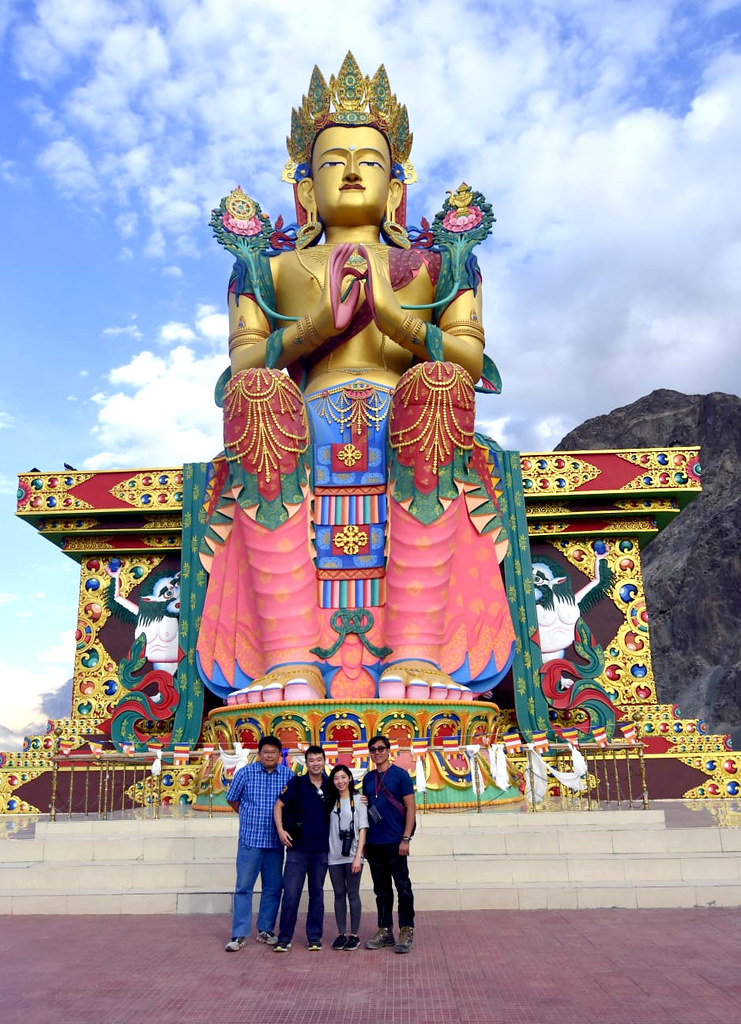 |
| Photo: Courtesy of Chang Haw Chong |
Dinner at Chamba Camp at Diskit
Felicia hosted the whole group to a campfire and a safari style dinner, a real treat, at Chamba Camp Diskit.
This trip was full of highlights. And Felicia never failed to surprise us.
To continue to the next day's adventure, click: "Day 5 - A Day of Adventures!"
To go back to the home summary page, click: "Nubra Valley Medical Volunteer work - a trip of discoveries"

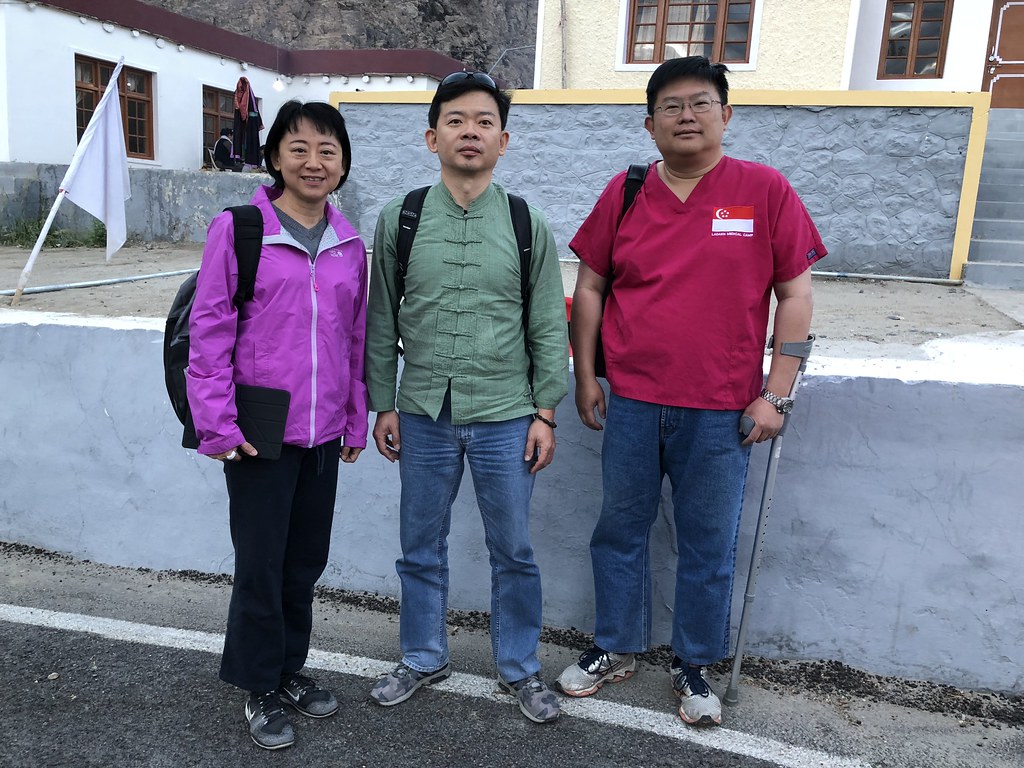


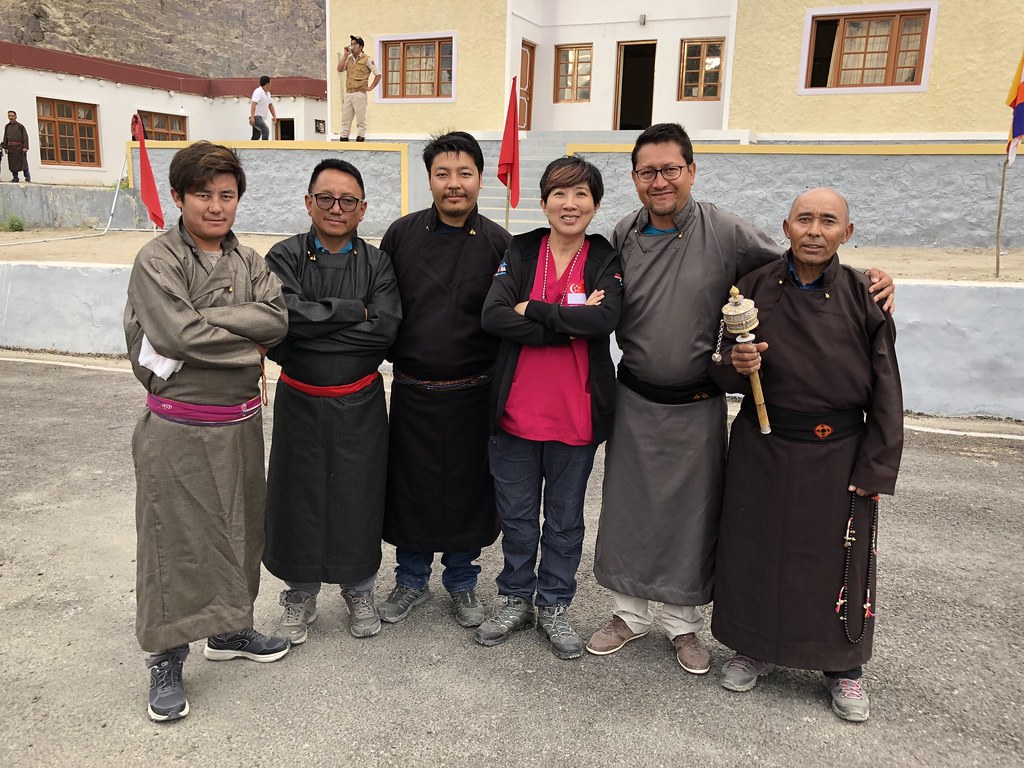
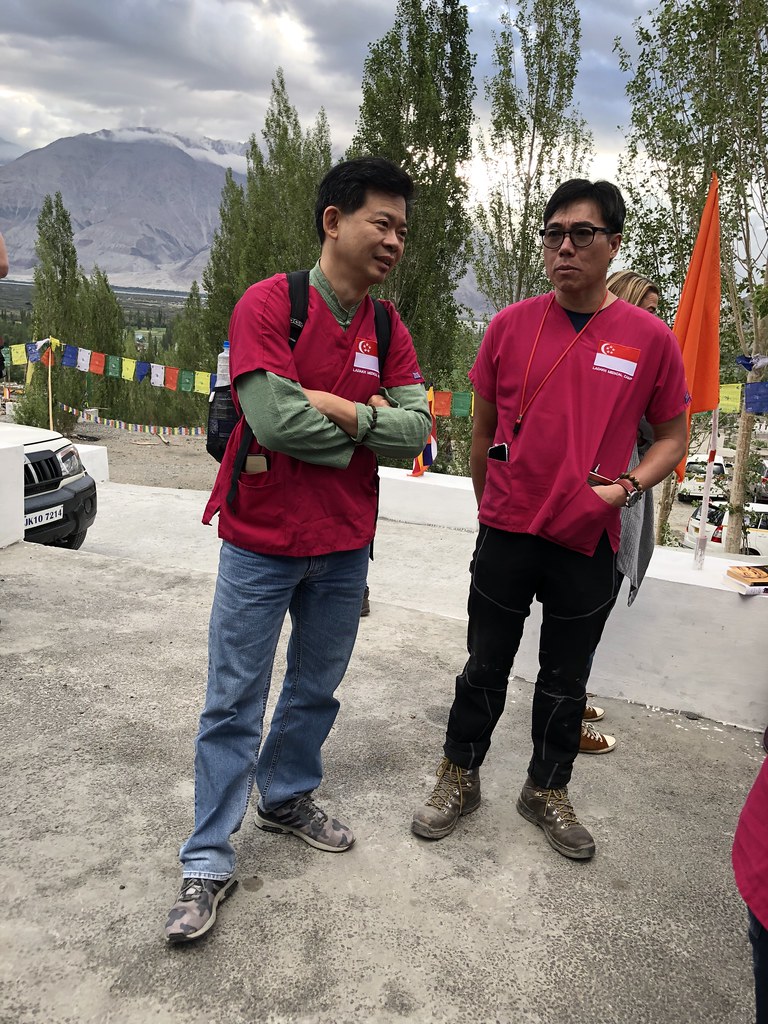


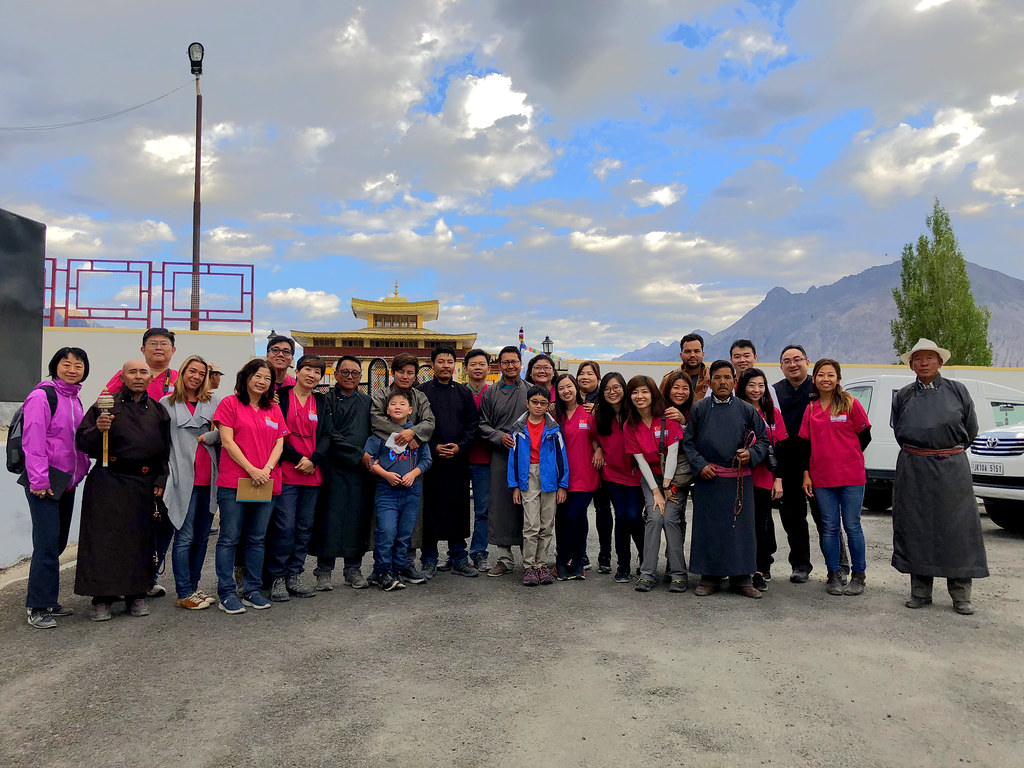

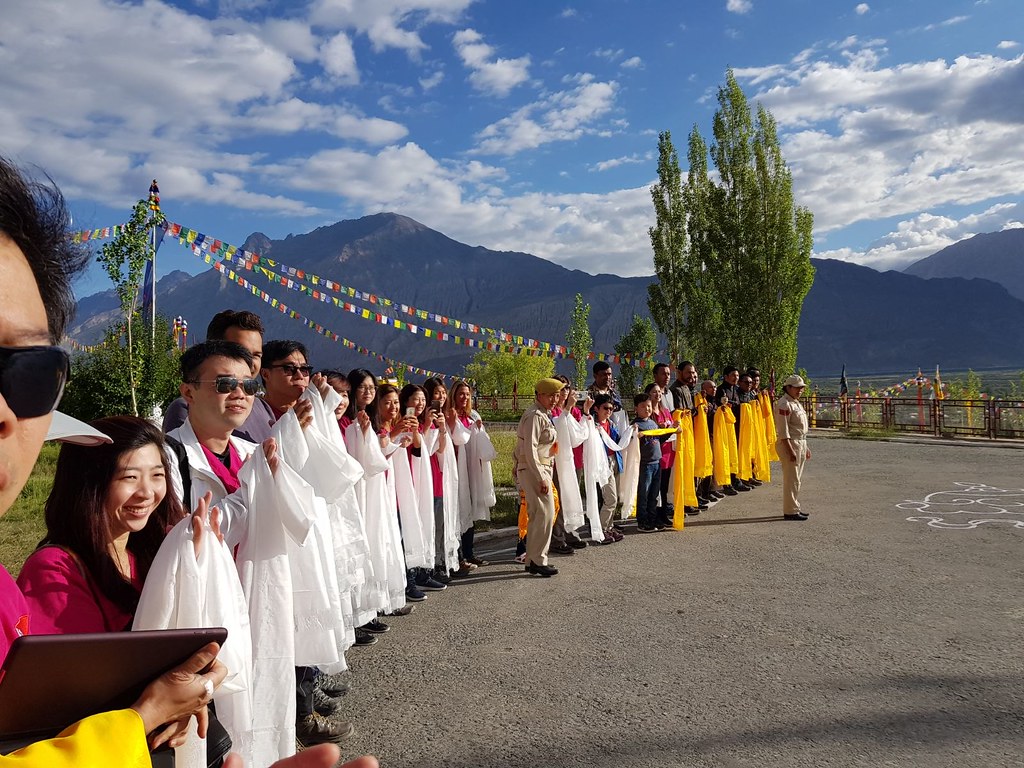




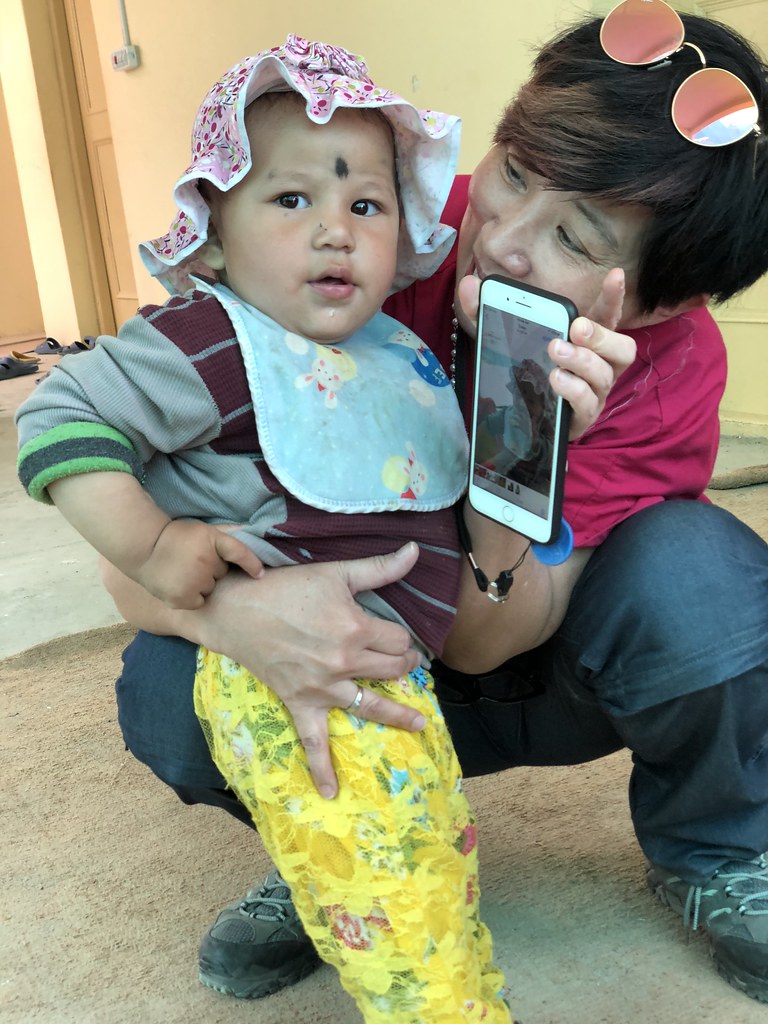
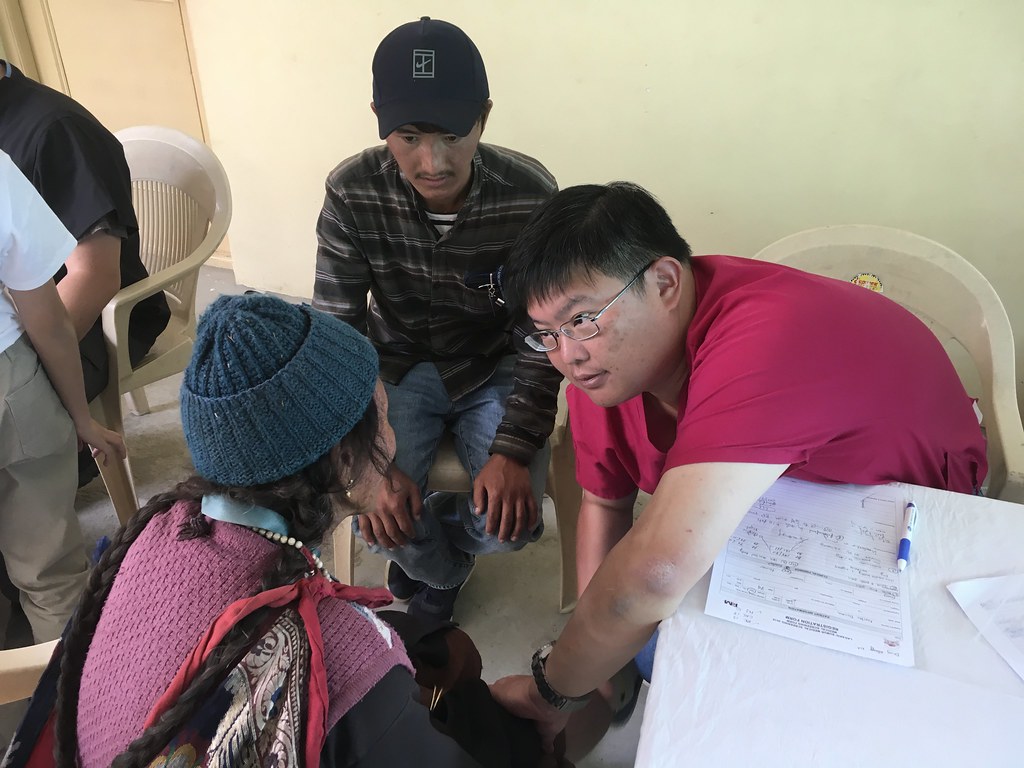
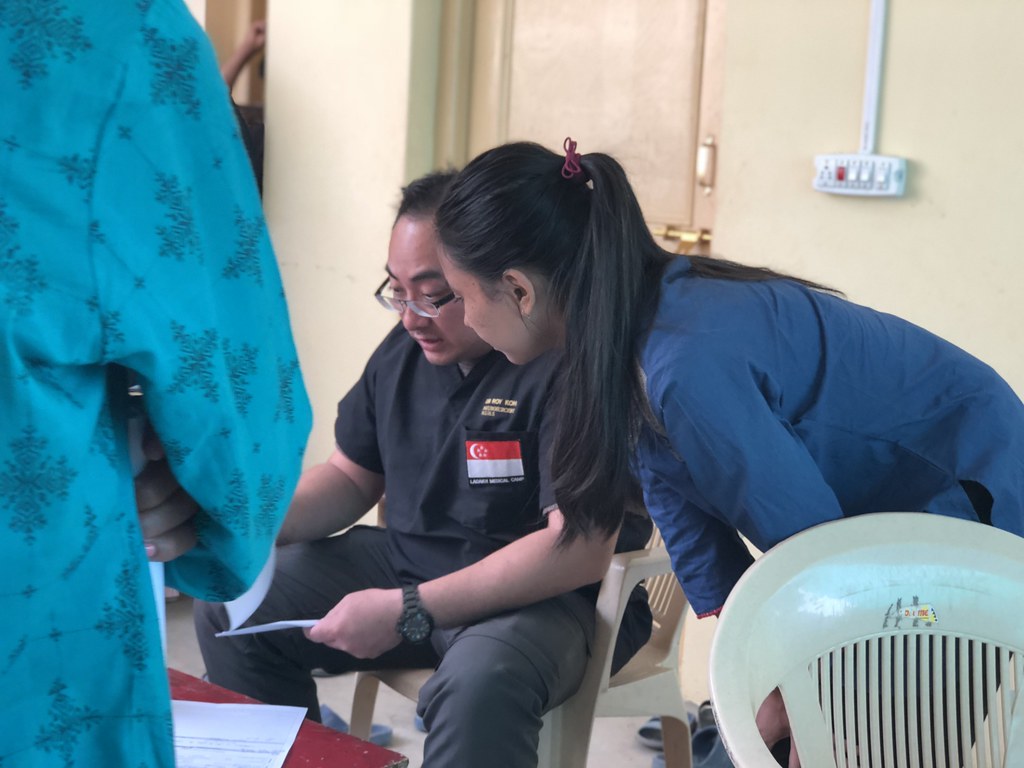
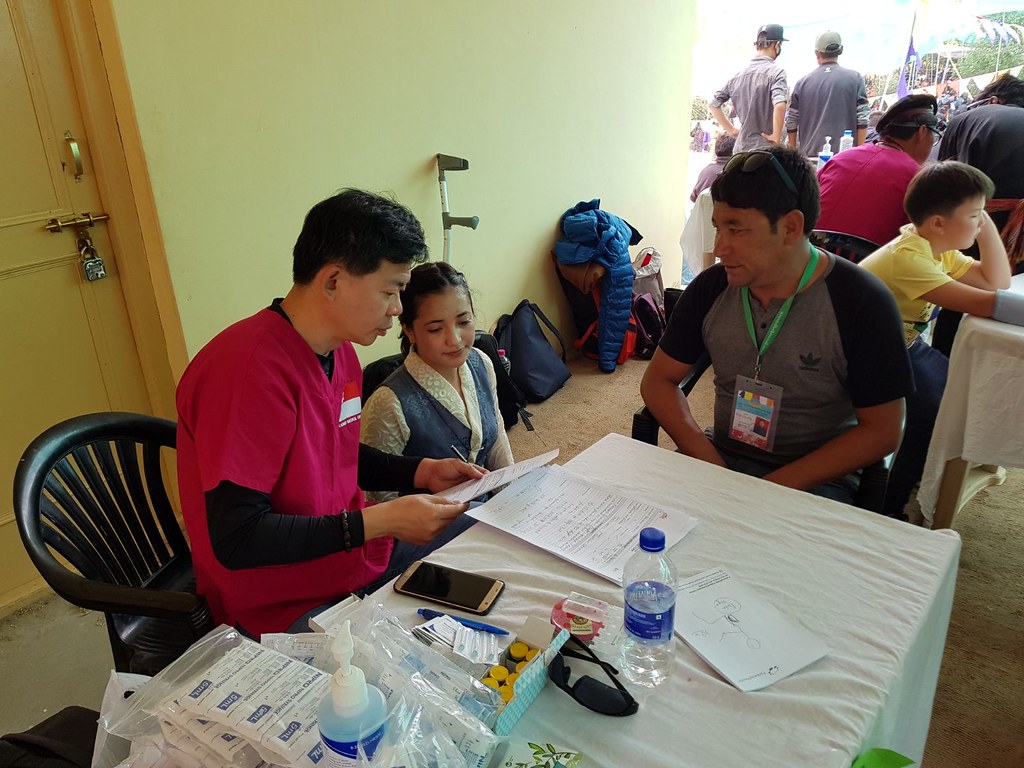


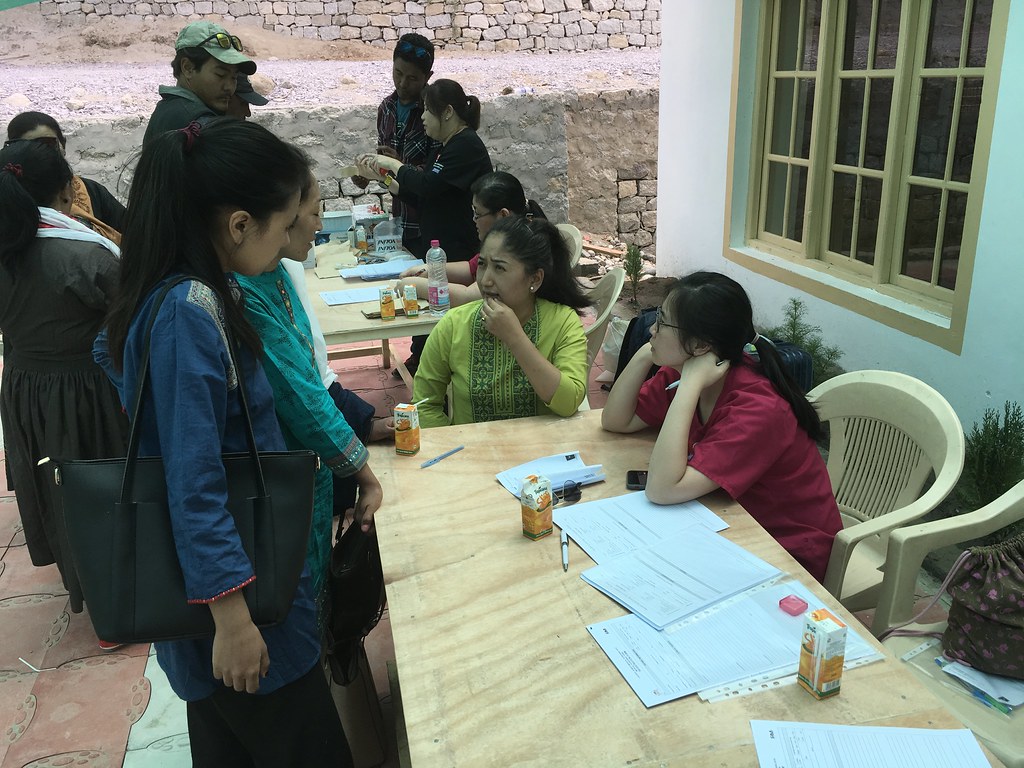

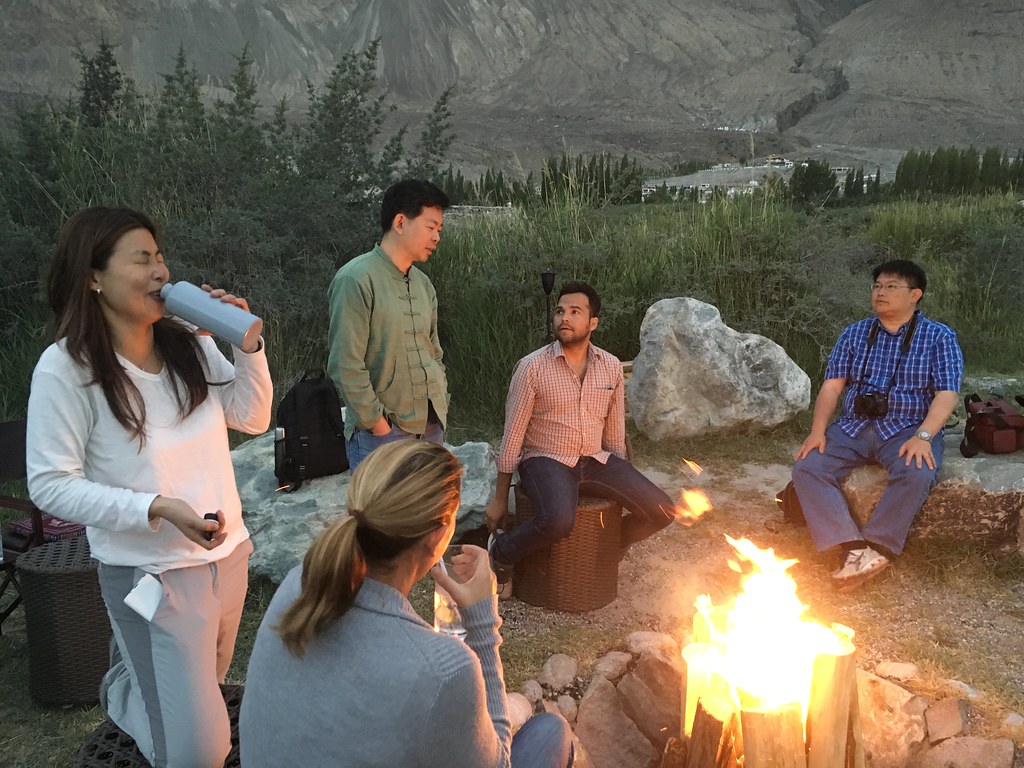

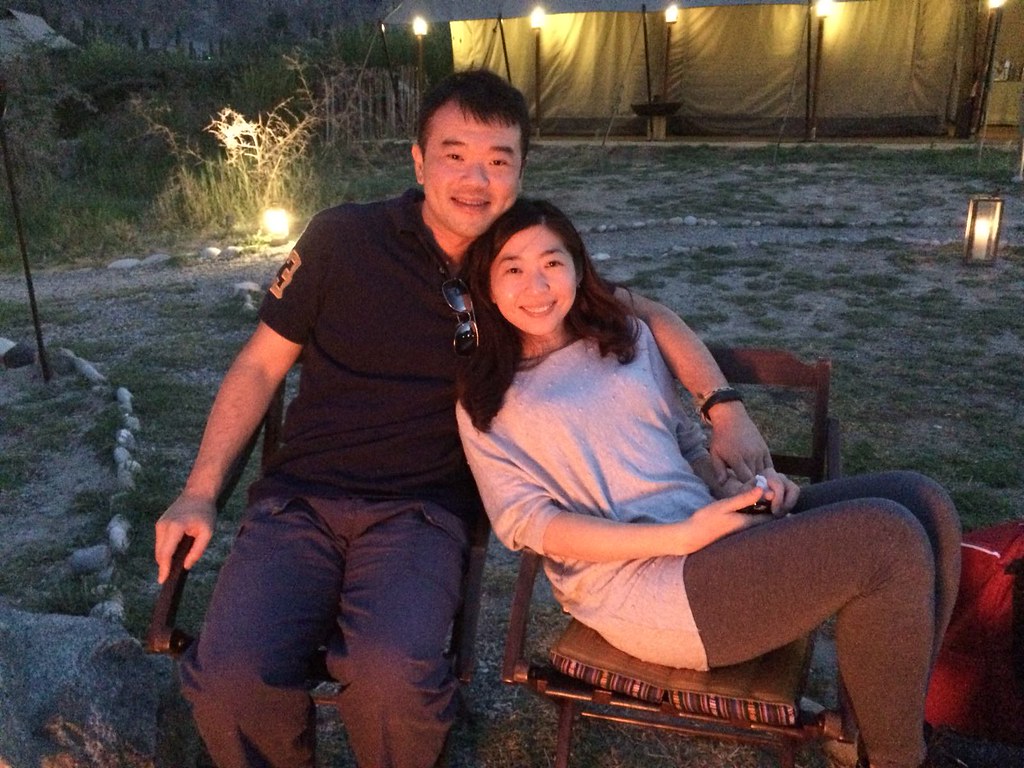
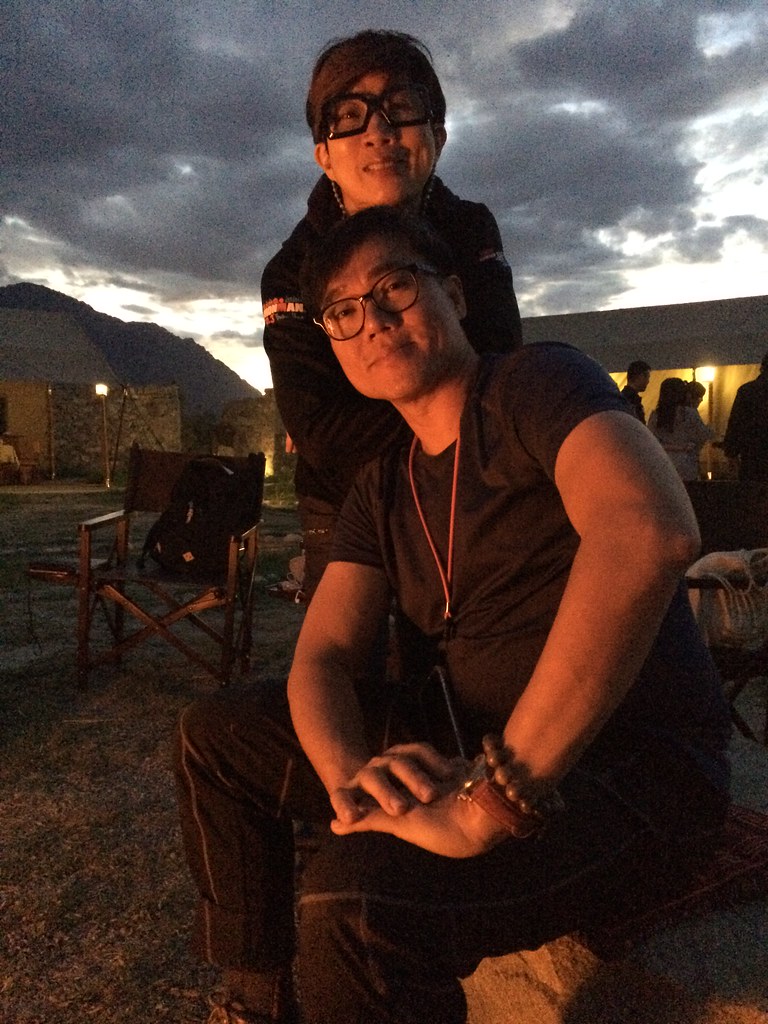
No comments:
Post a Comment